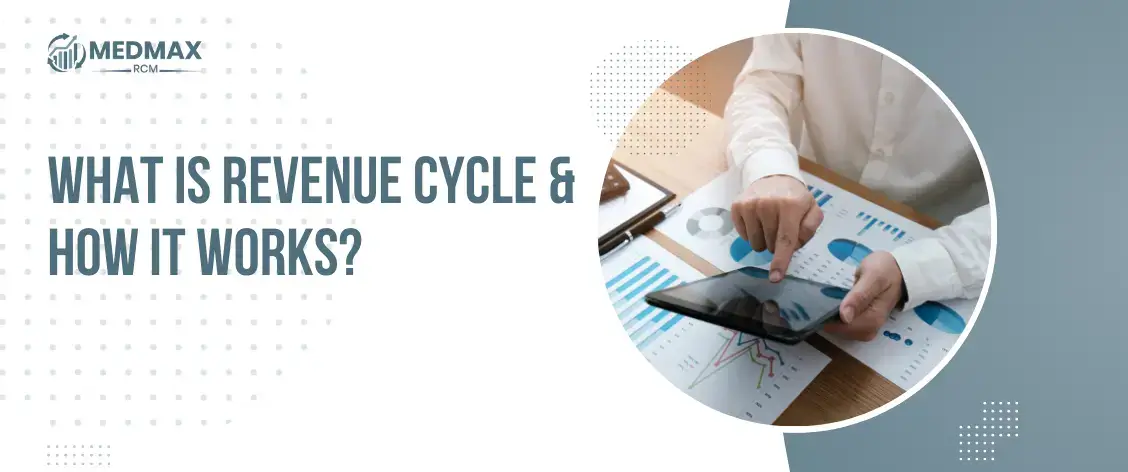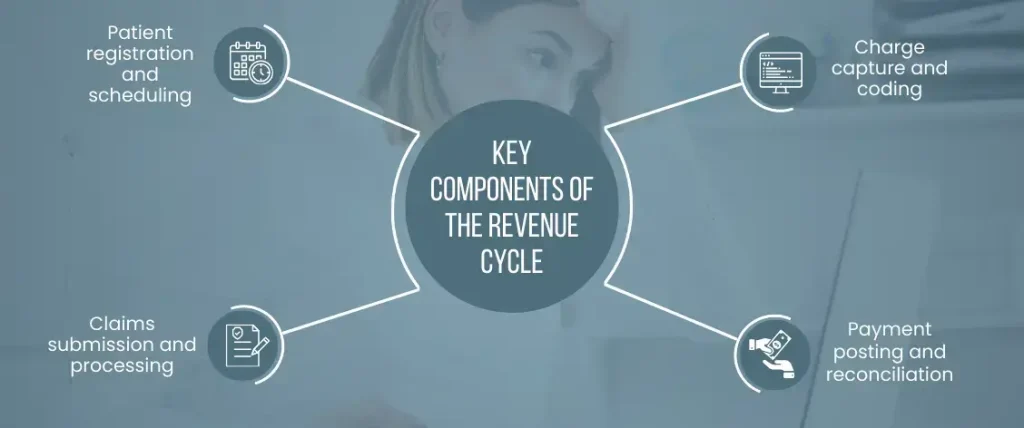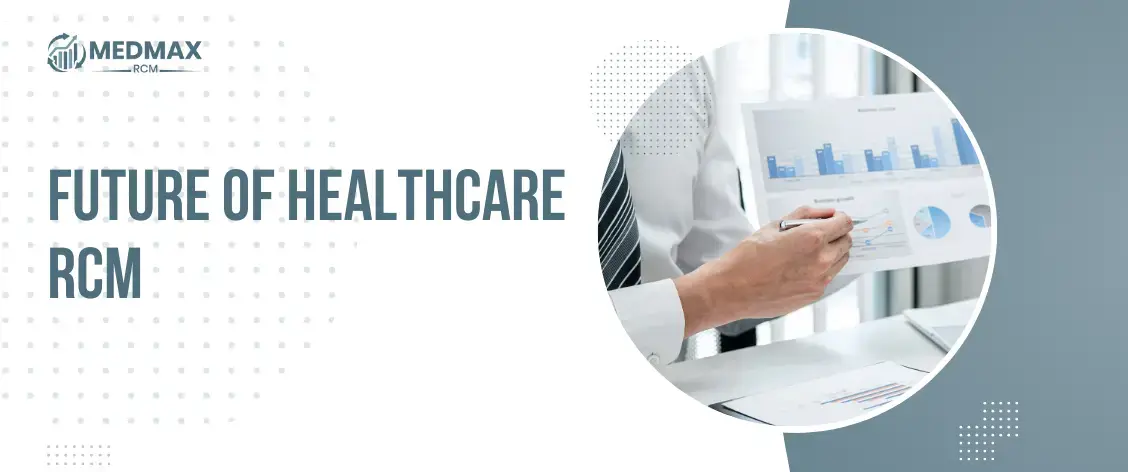
What is Revenue Cycle & How it Works?
The revenue cycle refers to the process that healthcare providers go through in order to earn income from the services they provide to patients. It requires the completion of a wide range of duties, including the registration of patients and the scheduling of appointments, the processing of claims, and the reconciliation of payments, amongst other things. The revenue cycle is very important to the overall financial health of healthcare organizations, and it is constantly undergoing a change in order to keep up with the ever-evolving rules, technological advancements, and the requirements of individual patients. This is because the revenue cycle is very important to the overall financial health of healthcare organizations.
Table of Contents
ToggleKey Components of the Revenue Cycle

Patient registration and scheduling
The process of registering the patient is the first step in the revenue cycle. This includes gathering information such as the patient’s demographics and insurance coverage, as well as organizing appointments for medical care.
Charge capture and coding
The charge capture and the coding operations are two of the numerous activities that are included in the revenue cycle. They have to identify the services that were provided to the patient and then assign the appropriate billing codes to those services.
Claims submission and processing
Claims need to be filed to the insurance company representing the patient as soon as possible once costs have been recorded and codes have been assigned to them so that they may be processed. Claims have to be as specific and exhaustive as possible in order to ensure that payments will be issued in a timely way.
Payment posting and reconciliation
After the processing of claims and the receiving of payments, it is required to carry out a reconciliation of the amounts that have been received against the charges that were initially incurred in order to ensure that everything is accurate. If there are any inconsistencies, they need to be resolved as soon as humanly feasible.
Challenges and Opportunities in the Revenue Cycle
Complex regulatory environment
The healthcare sector is subject to a great deal of regulation, and any changes in that legislation may have a considerable effect on the revenue cycle. In order to maintain compliance with the rules and avoid being fined, healthcare providers need to remain up to date on any changes that may occur.
Increasing patient responsibility for healthcare costs
As a consequence of the growth of health plans that have large deductibles and other cost-sharing systems, patients are taking on a bigger amount of the financial responsibility for the expenditure of their own treatment. This is a direct outcome of rising healthcare costs. Because of this, it is possible that the revenue cycle will become more difficult to control, which will also increase the likelihood of their being overdue balances.
Poor collections recovery
Patients are having a harder time paying their medical bills because high-deductible health plans require them to assume a greater share of financial responsibility for the expenses of their treatment. When costs are larger, there is often a higher chance for misunderstanding, an increased number of inquiries about insurance coverage, and an increased need for various financing solutions. When there is a greater emphasis placed on the patient as a payer, providers require efficient collection tactics to increase revenue and reduce the amount of bad debt that must be written off. A patient-centered payment plan educates patients on their expected expenses, the extent of their insurance coverage, and the many payment choices available to them.
Advancements in technology and automation
Because of advancements in technology and automation, the revenue cycle has the potential to become less complicated, which may also lead to an improvement in the level of precision achieved. However, individuals who work in the healthcare profession have a duty to exercise prudence when seeking to strike a balance between the benefits of technology and the need for human monitoring and decision-making. This obligation comes with the job.
Best Practices for Managing the Revenue Cycle

Creating a culture of revenue cycle management
Creating a culture of revenue cycle management requires elevating the importance of revenue cycle management inside the business to the level of a top priority. This entails establishing crystal-clear objectives, providing personnel with appropriate training and education, and holding staff responsible for the success of the revenue cycle.
Ensuring accurate and complete documentation
When it comes to charging collection and coding, having documentation that is both accurate and comprehensive is quite necessary. This involves correctly documenting diagnoses and treatments, as well as ensuring that all paperwork is clear and full. Additionally, this entails recording all services that were delivered to the patient.
Implementing effective charge capture and coding processes
Utilizing the relevant tools and technology is a necessary part of effective charge collection and coding procedures in order to guarantee correct and effective invoicing. This involves the use of software for charge collection, the use of coding best practices, and the utilization of technology to automate mundane operations.
Leveraging technology to streamline revenue cycle operations
Conclusion and Future Outlook
The revenue cycle is an important process in the healthcare industry, and it is constantly being improved in order to keep up with the ever-evolving legislation, technological advancements, and requirements of individual patients. This is done in order to maintain a competitive advantage in the industry.
If healthcare providers put a significant focus on using best practices for managing the revenue cycle, they will be able to guarantee that they will be compensated in a timely and correct manner for the services that they deliver. As the landscape of healthcare continues to evolve, the revenue cycle will continue to be an important area of focus for healthcare providers who want to maintain their financial stability and continue to provide high-quality treatment to their patients. This is because the revenue cycle is responsible for collecting payments from patients.

Related Posts
Emily Thompson
Emily Thompson is a Revenue Cycle Management (RCM) Specialist with extensive experience in the medical billing industry. She helps healthcare organizations and medical billing companies improve claim efficiency, reduce A/R backlogs, and implement data-driven RCM strategies. Emily’s articles focus on end-to-end medical billing services, denial prevention, and technology-driven revenue optimization for healthcare practices across the U.S.






